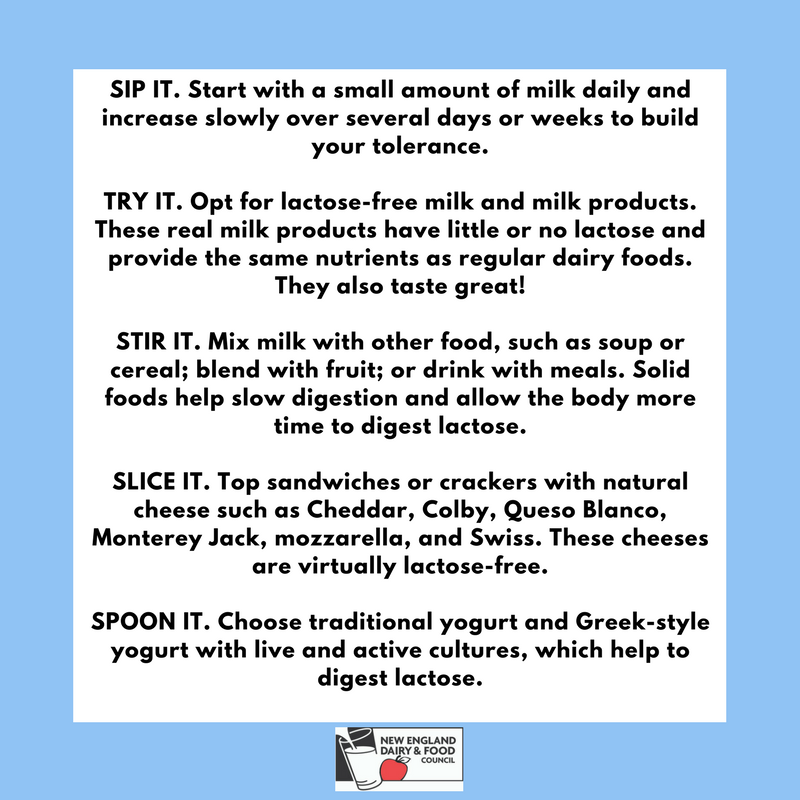 Lactose Intolerance
Lactose Intolerance
Lactose intolerance does not mean dairy avoidance.

Lactose is the sugar naturally found in milk and many milk products. In order to digest lactose, the body needs lactase, an enzyme that is made by the body. Some people do not make enough lactase to break down lactose (milk sugar), so they may experience physical symptoms when consuming foods that contain lactose. This is often referred to as lactose intolerance.
The good news is those that are lactose intolerant or showing symptoms of lactose intolerance don’t have to miss out on the great taste and health benefits of low-fat and fat-free dairy foods! Many health authorities agree that milk and other dairy foods are an important and practical source of key nutrients, for all people – including those who are lactose intolerant. According to an expert panel organized by the National Institutes of Health (NIH), eliminating dairy foods may not only be unnecessary to manage lactose intolerance, but could also lead to nutrient deficiencies that could result in negative health effects.
Different people can handle different amounts of lactose, and there’s a solution to meet most needs in the dairy aisle – from lactose-free milk to dairy foods that are typically easier to digest. Whether it’s a cold glass of milk, creamy yogurt or flavorful cheese, dairy foods taste great and offer a powerful nutritional punch that you don’t want to miss! Here are some tips to help those with lactose intolerance continue to enjoy dairy:

